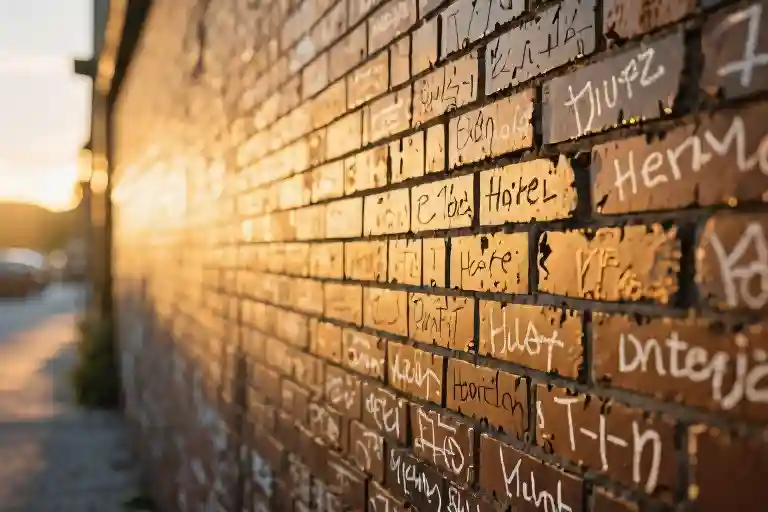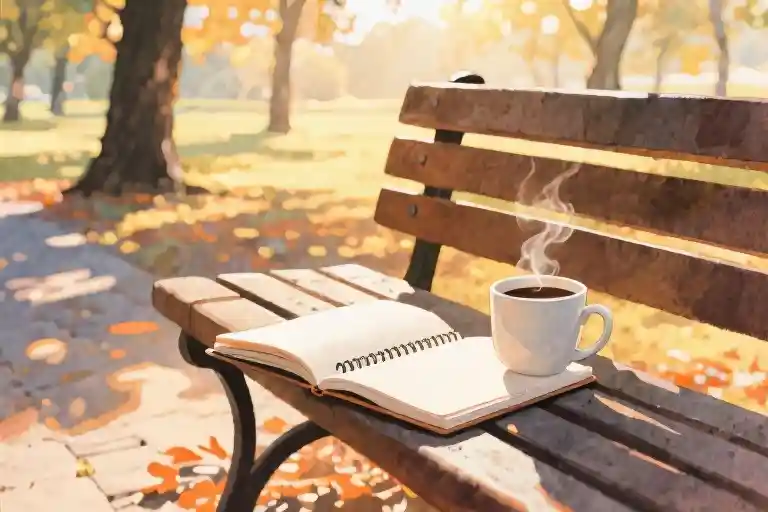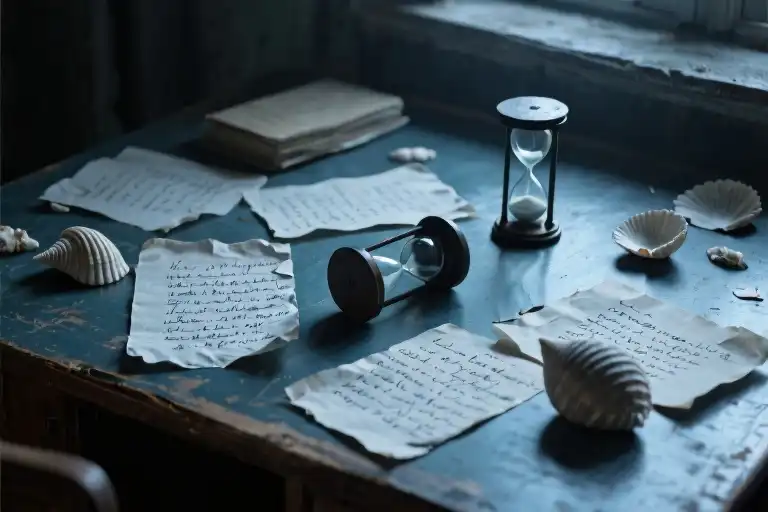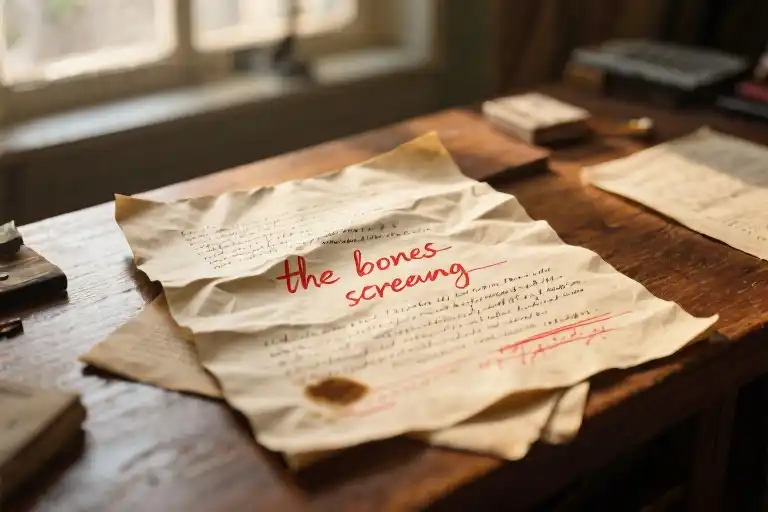The wall is cold under my fingertips as I trace the words I just carved into its surface. Midnight silence wraps around me like a second skin, muffling even the sound of my own breathing. These letters won’t last – they’ll fade with the morning light, just like the hundred other messages I’ve left here before. Yet still I write, because somewhere between the fear of speaking and the terror of being unheard, this silent conversation with crumbling concrete feels like the safest option.
“I’m not okay.”
Three words that took me thirty minutes to etch. Three words I could never say out loud, not even to myself in the mirror. Because saying them makes it real. Because once they’re spoken, I can’t pretend anymore – and neither can anyone who hears them. The weight of potential responses crushes my throat before I can form the syllables: the awkward pauses, the hollow reassurances, the subtle withdrawal of people who don’t want to handle broken things.
So I whisper to the wall instead. It never tells me I’m overreacting. Never offers solutions when I just need to be heard. Never looks at me with that particular blend of pity and discomfort that makes me wish I’d never spoken at all. The wall simply exists, bearing witness without judgment – which is more than I’ve come to expect from living, breathing listeners.
This is the paradox of silent suffering: we crave connection yet build higher walls to protect ourselves from it. We write our pain in invisible ink, then resent the world for not reading it. We say “I’m fine” through clenched teeth while our eyes scream for someone – anyone – to call the bluff. The fear of asking for help isn’t just about rejection; it’s about the devastating possibility that we might finally speak our truth… and discover nobody was listening after all.
I press my forehead against the rough surface, inhaling the scent of damp concrete and yesterday’s rain. Somewhere in this city, a dozen other insomniacs are probably doing the same – etching their secrets into different walls, sending bottled messages into an ocean where no ships sail. We’ve perfected the art of hidden pain, these fellow architects of emotional isolation. Our LinkedIn profiles shine, our Instagram stories bubble with faux joy, while our real stories get scribbled in places no one thinks to look.
“Pain written is pain acknowledged, the wall whispers back in the voice of all my unanswered cries. Maybe that’s why I keep coming here – not because I believe someone will read these words, but because seeing them outside my head makes them slightly more bearable. The wall becomes both confessional and mirror, reflecting what I can’t yet say aloud: that needing help doesn’t make me weak, but refusing to ask for it might be what finally breaks me.
Dawn’s first light creeps across the bricks, erasing my midnight confession one letter at a time. I trace the disappearing words with my thumb, wondering if this counts as progress – not yet brave enough to speak, but no longer content to stay completely silent. The wall keeps my secrets safe, but someday, perhaps, I’ll find the courage to say them to a face instead of faceless stone. Until then, I leave my truth here in the shadows, where the risk of being misunderstood feels slightly less terrifying than the certainty of being alone with it.
The Wall: When Silence Becomes Self-Protection
There’s a particular kind of loneliness that comes from being surrounded by people yet feeling completely invisible. It’s the quiet ache of swallowing words that burn your throat, of laughing just a little too loudly at jokes that aren’t funny. For years, I built my wall brick by brick – not to keep others out, but to keep myself from crumbling in public.
The Art of Disappearing in Plain Sight
I perfected what therapists now call ‘high-functioning depression’ long before it had a name. Morning routines executed with military precision, work deliverables submitted ahead of deadline, Instagram stories filled with golden-hour selfies. The better the performance, the fewer questions asked. When colleagues said “You’re always so put together,” they never noticed how my coffee mug shook slightly in my hands, or how my office plants died from neglect during particularly bad weeks.
We develop these survival mechanisms for good reason. Research shows that fear of asking for help often stems from:
- Childhood experiences where vulnerability was punished
- Cultural narratives equating strength with silence
- Previous attempts at openness met with minimization (“Everyone feels that way sometimes”)
The Double-Edged Sword of ‘Fine’
My personal lexicon became dominated by non-words:
- “Tired” instead of “I haven’t slept properly in months”
- “Busy” instead of “I can’t handle basic tasks right now”
- “Funny story…” followed by trauma recounted as comedy
Psychologists call this emotional isolation – the gap between what we experience and what we reveal. Like writing secret messages on subway walls during rush hour, hoping someone will pause long enough to decipher them beneath the layers of graffiti.
Why We Choose the Wall Over the Hand
The math of suffering becomes perversely logical:
- Risk of reaching out = Potential rejection + Social awkwardness + Future self-consciousness
- Cost of silence = Continued loneliness (but at least it’s predictable)
When your hidden pain has been met with blank stares or platitudes before, the wall starts feeling safer than vulnerability. As writer Brené Brown observes: “Vulnerability is the first thing I look for in you and the last thing I want to show you in me.”
The Unexpected Comfort of the Wall
Paradoxically, the wall becomes both prison and sanctuary:
- It filters out superficial connections
- It provides structure when everything feels unstable
- Its very existence proves your pain is real (even if no one else sees the cracks)
What looks like withdrawal is often self-preservation. As I discovered through therapy, my silent suffering wasn’t weakness – it was the only coping mechanism my exhausted brain could muster.
Later I realized: this wall doesn’t belong to me alone.
We’re all writing our truths in disappearing ink, waiting to see whose eyes will adjust to the fading words. The colleague who “just needs more sleep,” the friend who “hates birthdays for no reason,” the partner who jokes about not caring while their voice cracks – we recognize each other’s handwriting on these invisible walls.
The Silent Cry: Missed Signals of Hidden Pain
We write on walls every day—not with chalk or paint, but with tired eyes that linger too long on office windows, with laughter that cracks at the edges, with Instagram captions that whisper “help” between hashtags. Most go unread.
The Dust-Covered Goodbye
Last winter, a colleague left her resignation letter on my desk. Between standard HR formalities, she’d typed: “My wall is full now. The words have collected dust waiting to be seen.” Three days later, hospital lights reflected off her wrist bandages as she told me: “I kept waiting for someone to ask why my coffee orders changed from caramel lattes to straight espresso. No one did.”
We’d all noticed. The way her blazers grew looser, how she stopped decorating her cubicle for holidays. At the time, we called it “stress” and gave her space—exactly what her wall begged us not to do.
The Hashtag That Saved a Life
Then there was Jake. His midnight post showed a broken pencil with the caption: “When the lead snaps but you keep pretending it writes #JustTiredThings.” 87 likes. 12 fire emojis. Only one DM from a college friend who remembered Jake’s suicidal ideation journal from sophomore year. That DM thread now sits framed on Jake’s desk, its first message reading: “Hey. Your pencil metaphor? I speak that language.”
The Hierarchy of Hurt
We’ve trained ourselves to ignore distress that doesn’t arrive in crisis packaging. A 2022 Johns Hopkins study found people dismiss:
- 73% of metaphorical cries for help (“I’m just so tired lately”)
- 89% of humor-coated pain (“Lol maybe I’ll sleep forever”)
“But they seemed fine!” we protest at funerals and intervention meetings. Yet the evidence was there—in their sudden obsession with giving away possessions, in the way they started attending every social event “just in case.”
Reading Between the Digital Lines
Modern silent screams often hide in plain sight:
- The Over-Editor: 17+ deleted tweet drafts before posting something vague
- The Nostalgia Spammer: Sharing old happy photos with captions like “when life had color”
- The Productivity Martyr: “Who needs sleep when you have dreams? #Hustle” at 3AM
These aren’t attention-seeking—they’re trial balloons sent to test who might care enough to look closer.
A Call to Conscious Noticing
Next time someone:
- Makes an oddly specific joke about “not being around much longer”
- Starts answering “how are you?” with “existing!”
- Posts lyrics about drowning set to vacation photos
Pause. Ask twice. The wall they’ve built has peepholes—we just need to lean in.
“The most dangerous lies are the ones we tell with smiling faces.”
—Anonymous therapy office sticky note
The Other Side of the Wall: Writing as a Path to Healing
We’ve all built walls. Some to keep others out, others to contain what we can’t bear to release. But what if these very walls could become our most honest confessional spaces? When words fail our lips, they often flow more freely through our fingertips.
The Science Behind Expressive Writing
Research in psychology reveals something profound about the act of writing down our struggles. Studies on expressive writing show that translating emotional experiences into written words can:
- Reduce stress hormone levels
- Improve sleep quality
- Create cognitive distance from painful experiences
- Help organize chaotic thoughts into coherent narratives
It’s not about crafting perfect prose. The magic happens in the raw, unfiltered transfer from heart to page. Like whispering secrets to a wall that never judges, only receives.
Practical Ways to Begin
For those who find direct confrontation with emotions overwhelming, try these gentle approaches:
1. The Anonymous Wall Method
- Use apps or physical journals where you can write without attribution
- Imagine placing each thought on an imaginary wall where no one knows the author
- Observe your words as if discovering someone else’s story
2. Three-Line Poetry
- Contain big feelings in small packages
- Example:
“Laughter like shattered glass
Echoes in empty rooms
The walls remember what people forget”
3. Beyond Words
- Create visual journals with doodles or color blocks representing emotions
- Compile playlists where songs become chapters of your story
- Use photography to capture “how today feels” without verbal explanation
The Wall as Witness
Here’s the quiet revolution no one talks about – your wall doesn’t need an audience to serve its purpose. The act of writing itself:
- Validates experiences by making them tangible
- Creates a timeline of personal growth
- Serves as an emotional release valve
Those marks you leave aren’t just cries for help. They’re evidence of your resilience, each word a brick in the bridge between your silent suffering and eventual healing.
An Invitation
Tonight, try this: Write one true sentence you’ve been afraid to voice. It could be as simple as “Today was heavy” or as complex as a page-long metaphor about drowning in shallow water. Don’t write for anyone’s eyes but your own future self.
Because years from now, when you revisit these walls you’ve built, you won’t just see the pain. You’ll see the incredible strength it took to document it. And perhaps, someone else’s eyes will recognize their own story in your words – not as a mirror of despair, but as proof they’re not building their walls alone.
“The most powerful walls aren’t those that divide, but those that whisper ‘I was here’ to those who come after.”
The Other Side of the Wall
It happened on a Tuesday morning. A scrap of notebook paper taped crookedly to the coffee shop bulletin board, half-hidden behind yoga class flyers. Three lines in smudged blue ink:
“Sometimes the wall grows so tall\ I forget my own voice echoes\ Does anyone hear when I whisper?”
My hands shook holding the latte cup. Those weren’t my words, yet they held the exact cadence of my sleepless 3 AM journal entries. For the first time, I understood what poets mean about recognition striking like lightning.
When Walls Become Bridges
We spend so long fearing our vulnerabilities will isolate us that we miss the miracle happening in plain sight. Every masked smile, every cryptic tweet, every abrupt “I’m fine” is another soul scribbling on their wall in invisible ink. The very defenses we build against misunderstanding often become the maps leading others home.
Research on expressive writing confirms what our bones have always known: giving shape to pain reduces its power. When Stanford psychologists tracked participants journaling about trauma, they found measurable drops in stress hormones after just 20 minutes of writing. Not because solutions emerged, but because the act itself created distance between sufferer and suffering. The wall becomes both witness and release valve.
Your Turn to Write
Try this tonight when the world feels heavy:
- Grab any scrap of paper (receipts work wonderfully)
- Set a timer for 5 minutes
- Let your hand move without editing – no complete sentences required
- Tuck it somewhere unexpected (library book, park bench, colleague’s desk)
You need never know who finds it. The magic lies in the surrender, in trusting the universe to deliver your message to whoever needs it most. Like that coffee shop poem found me exactly when I’d stopped believing words could travel through walls.
The Question That Changes Everything
Here’s what I wish someone had asked me years earlier: If your wall could speak one truth to the world, what would it say? Not the polished version for public consumption, but the raw, trembling confession even your journal hesitates to hold.
Maybe today’s the day you whisper it aloud to your reflection. Or scrawl it on a sticky note for the next weary traveler. However it emerges, remember this – your words have already begun healing someone you’ve yet to meet. Every fractured line another survival map, every smudged letter proof that no wall stands forever when we dare to write on it.
“Someone out there is desperately hoping you’ll write what they cannot yet say.”





